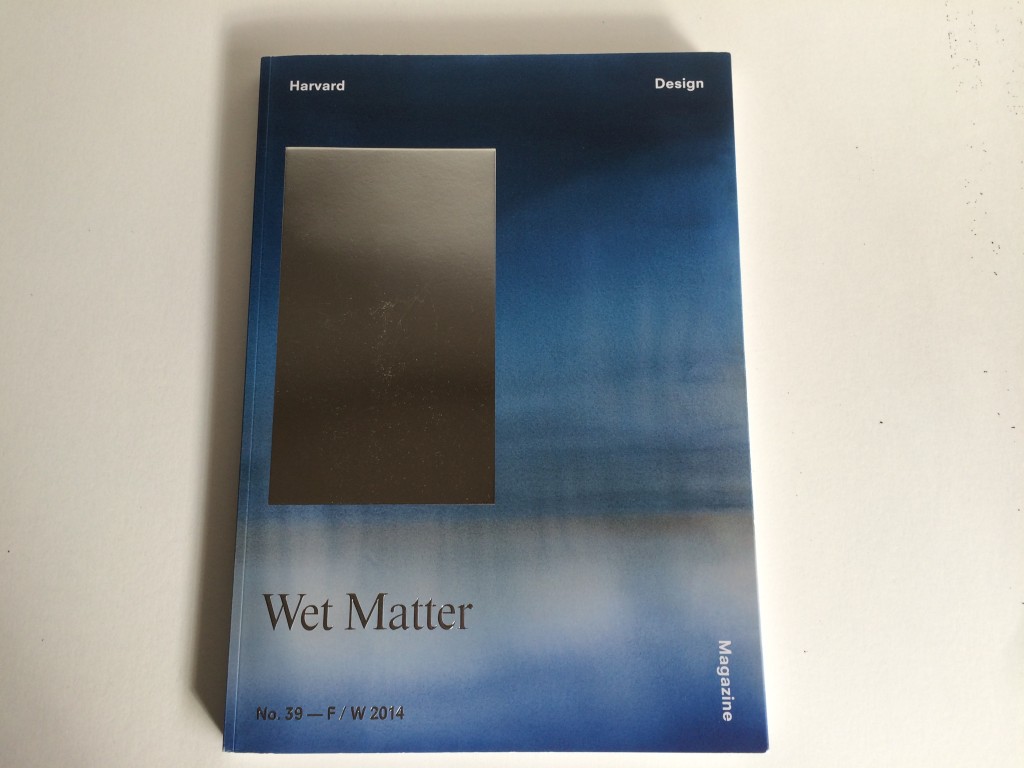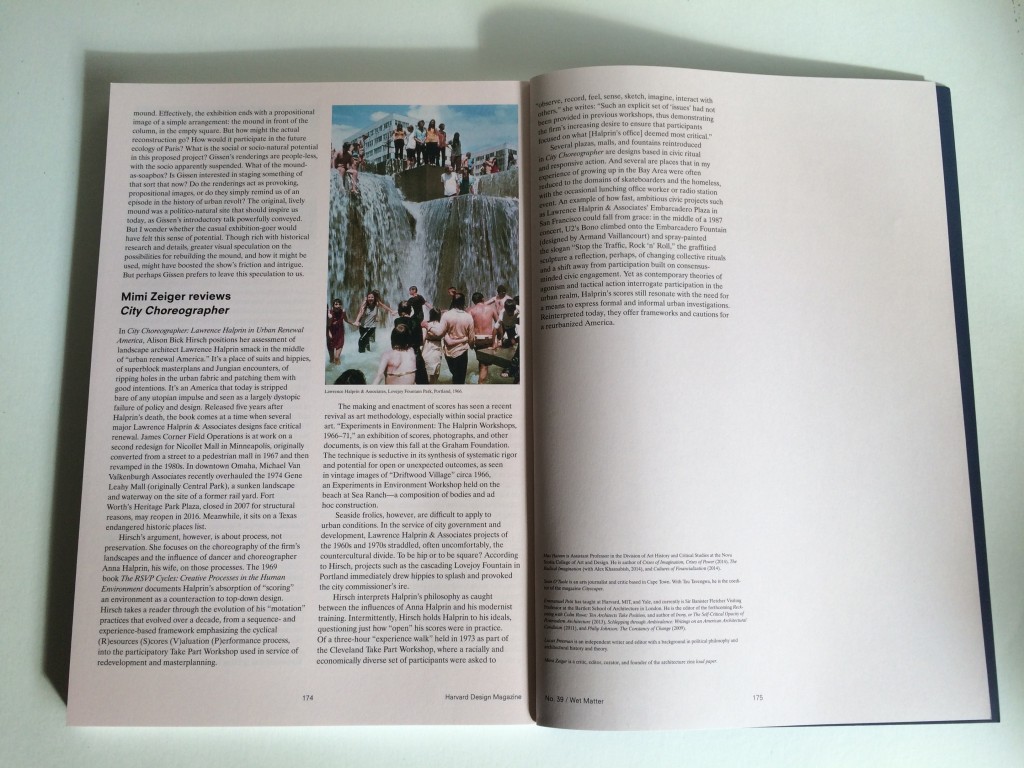Issue No. 39, “Wet Matter”
On a hot October evening I stood on the front walk of Greene and Greene’s Gamble House in Pasadena and watched a puppet crane poke his beak through the center of what can only be described as an Arts and Crafts vortex. A nearly 30-foot-wide sculpture hung from the street façade, patterned in a hallucinogenic, Morris-style rose motif. The crane and rose are, of course, the Gamble family crest. Its author, artist Patrick Ballard, calls it The Swirling Mess Below the Sleeping Porch Soon Solidified into a Crest of Phantasmagoric Weight that Creaks Between the Doors, the Floors, and a Form that Could Never Be a House Again. Read More …
On the day I arrive at Peter Shire’s Echo Park studio, a pile of fall fruit perches on a countertop. Bright orange persimmons and crimson pomegranates compete with the full spectrum of riotous color in the artist’s workshop. Racks are filled with multi-hued ceramics, and metal sculptures powder-coated in vivid green, blue, and violet hang from the ceiling. And then there’s Shire himself. He’s dressed in a tangerine t-shirt, a red apron, gray shorts, and lime and purple striped socks. Read More …
“Could life be more beautiful?” wrote Deborah Sussman on 1 November 1954 in a letter home to her parents. A young designer living in the Eames house and working for the office, she would become the environmental designer responsible for the iconic colourful graphics of the 1984 Los Angeles Olympics and countless bold visions, including the cartoonish lettering used on the billboard for the 1972 documentary Reyner Banham Loves Los Angeles.
Sussman passed away in August. Sharply present on the LA scene, even at 83, she had been quietly fighting breast cancer over the last year and news of her death was a sad shock to the design and architecture community. How could someone so vital be gone? Graphic designer April Greiman recalled a story of petite Sussman introducing herself by saying, “I’m kinda a big deal”. Read More …
Long Beach resident and activist Elliot Gonzalez has been working seven years to get the roof garden atop the public library at the Long Beach Civic Center reopened to the public.
He was twenty when he first hatched his plan. He spied the ruins of terraced lawns, abandoned planters, and open-air concrete bleachers through chain-link fencing. Stairways that once lead to the park were shuttered with steel gates and signs reading “Area Closed,” “Roof Closed,” “Trespassing Will Be Cited.” Read More …
This past May, octopus bacon—a little surf, a little turf—landed Superba Snack Bar in a spot on Jonathan Gold’s hotly anticipated 101 Best Restaurants in Los Angeles list. The food isn’t the only thing playing fast and loose with diners’ expectations. The interiors capture Venice’s mongrel vibe—Dogtown meets Silicon Beach. There are bike racks, of course, and artist and skateboarder Geoff McFetridge designed the wallpaper. But the zany details, created by Los Angeles-based Design, Bitches, keep going: A tile wall near the open kitchen mimics the inside of a swimming pool, ticking off the depths, and surfer-esque poncho fabric covers the banquettes. Read More …
This is a tale about a blob in a park. Or, this is a tale about a blob in a park with a bridge. Or the tale of a blob in a park, a bridge, and a tower designed by LA’s most famous architect. Or, it’s the tale about a city and a blob in a park, a bridge, a tower, a lacklustre sphere, and a subway stop. It’s a cautionary tale.
In late June the Los Angeles County Museum of Art (LACMA) releasedPeter Zumthor’s revised design for its new museum building. His earlier preliminary design, a self-described “black flower” raised some 30 feet above the ground on oversized glass footings, oozed a wee too close to the La Brea Tar Pits that inspired its undulating form. Leadership at the Page Museum, which actively uses the pits for research, expressed concern and asked Zumthor to back off. Squeezed in and smooched out, the new Schmoo-like scheme maintains the approximately 400,000 square feet required to display museum’s extensive collection, but it does so by stretching across Wilshire Boulevard to a piece of property that is currently a LACMA parking lot. Read More …
Last Friday, Rem Koolhaas sat on stage in the main event tent of Fundamentals, the 14th International Architecture Exhibition, la Biennale de Venezia, for a panel discussion on preservation. His shoulders were characteristically hunched and his hands were folded over the microphone. All eyes were on Koolhaas as the packed house waited for him to speak, willing him to fully explain why, as director of the biennale, he broke La Biennale into three parts, tasking the national pavilions with a research imperative entitled Absorbing Modernity: 1914–2014, devoting the Central Pavilion to the kit-of-parts Elements of Architecture, and filling the Arsenale with the interdisciplinary, countrywide scan, Monditalia. Read More …
Apple may have acquired Beats Music and Beats Electronics in May, but the new Beats by Dre headquarters in Culver City couldn’t be farther from the all-white aesthetic favored by Jonathan Ive and Steve Jobs or Norman Foster’s spaceship-in-the-garden landing soon in Cupertino. “We come from hip-hop, hardcore punk, and indie rock. Hype Williams to Paul Williams, Robert Mapplethorpe to Robert Kelly. How do you design for that without being cliché?” asks Luke Wood, cofounder of the company with Dr. Dre and Jimmy Iovine. Read More …
On paper, the overhaul of Steve and Colleen Nusinow’s 2,000-square-foot Craftsman-style bungalow in Redondo Beach, California, is a classic empty-nest story: The kids move out, the parents treat themselves to a master suite. But their tale isn’t typical. Like many remodelers, the couple wanted to ditch their cramped bedroom, which faced the street and lacked adequate closet space. In their quest for more room and privacy, the Nusinows turned the house inside out, opening it to the outdoors for entertaining and everyday living. Read More …

